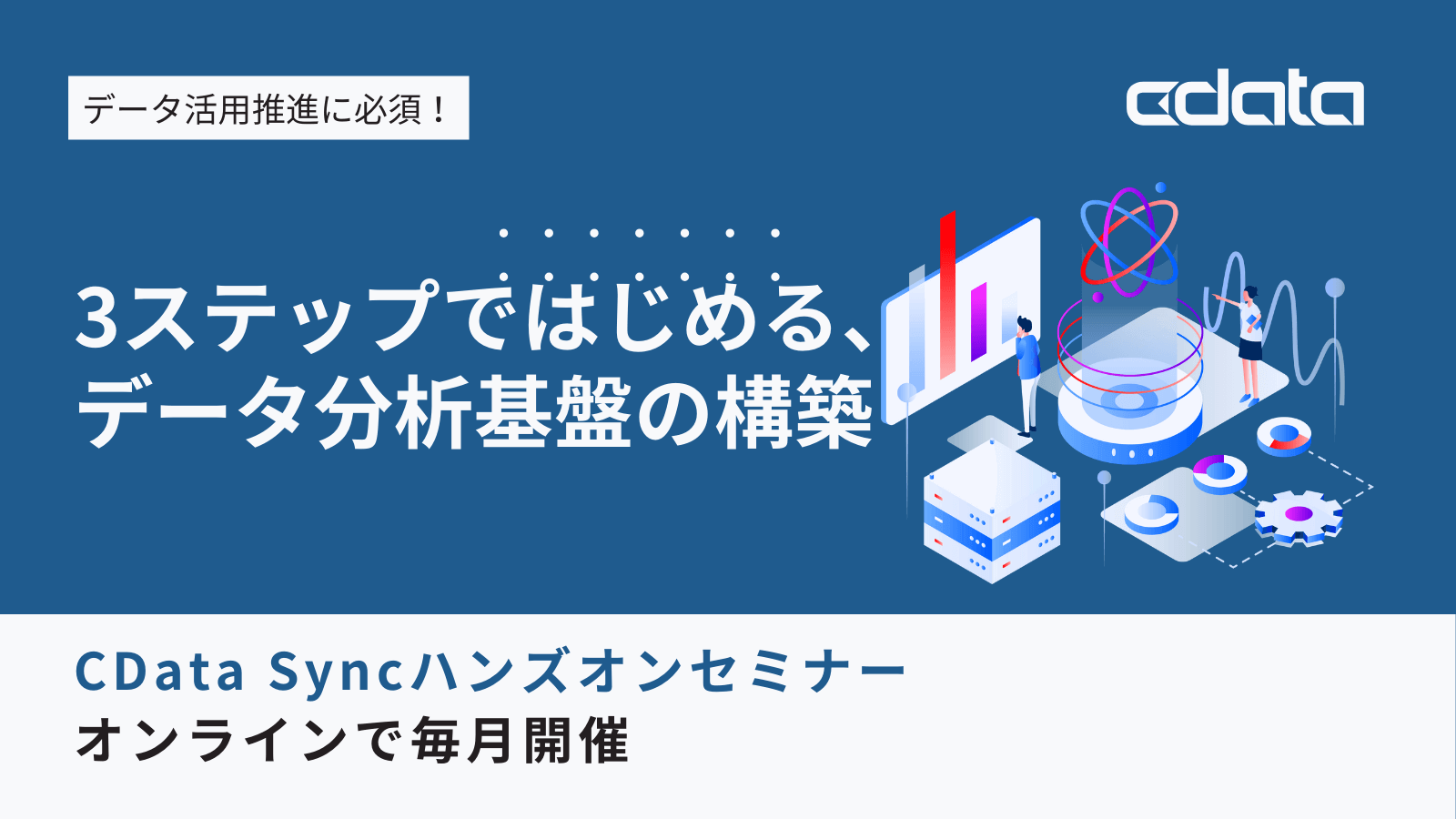ノーコードでクラウド上のデータとの連携を実現。
詳細はこちら →CData Software Japan - ナレッジベース
Latest Articles
- MySQL のデータをノーコードでREST API として公開する方法:CData API Server
- CData Sync AMI をAmazon Web Services(AWS)で起動
- Connect Cloud Guide: Derived Views, Saved Queries, and Custom Reports
- Connect Cloud Guide: SSO (Single Sign-On) and User-Defined Credentials
- Connect Cloud クイックスタート
- Shopify APIのバージョンアップに伴う弊社製品の対応について
Latest KB Entries
- DBAmp: Serial Number Expiration Date Shows 1999 or Expired
- CData Drivers のライセンスについて
- Spring4Shell に関する概要
- Update Required: HubSpot Connectivity
- CData Sync で差分更新を設定
- Apache Log4j2 Overview
ODBC Drivers
- [ article ] 国産セルフサービスBI ツールData Knowledge でAutify ...
- [ article ] MySQL Workbench でAmazon DynamoDB データをクエリ
- [ article ] Claris FileMaker のESS 機能からSugar CRM のデータに連携する方法
- [ article ] Linux/UNIX 上のPython からBugzilla データにデータ連携
JDBC Drivers
- [ article ] Oracle Eloqua データをDatabricks にロードして分析処理を行う方法:CData ...
- [ article ] JReport Designer でAmazon DynamoDB データを連携
- [ article ] PowerBuilder からAzure Synapse データに連携
- [ article ] Microsoft Planner JDBC ドライバーを使用したOBIEE でのMicrosoft ...
SSIS Components
- [ article ] SSIS を使ってPaylocity データをSQL Server にインポート
- [ article ] Amazon Athena データからSQL Server ...
- [ article ] SSIS を使ってActive Directory データをSQL Server にインポート
- [ article ] Elasticsearch をSSIS 経由でSQL サーバーにバックアップする
ADO.NET Providers
- [ article ] Visual Studio でチャートコントロールと Google Calendar ...
- [ article ] Adobe Analytics データをYellowfin に連携してビジュアライズ
- [ article ] Infragistics XamDataGrid を使用してPCA Accounting ...
- [ article ] Oracle HCM Cloud をSSIS 経由でSQL サーバーにバックアップする
Excel Add-Ins
- [ article ] Jetty コネクションプールからExcel データに連携。
- [ article ] SharePoint Excel Services データをASTERIA Warp に繋いでみた
- [ article ] Mac OS X 上のMS Excel でSalesloft データを連携利用
- [ article ] StiLL からCData Software ODBC Driver を使ってOracle HCM ...
API Server
- [ article ] ソフトウェア開発ツールMZ Platform でOData データと連携
- [ article ] SQLite へのOData データのETL/ELT パイプラインを作ってデータを統合する方法
- [ article ] クラウドネイティブRPA Automation 360™ でOData データを連携利用
- [ article ] Denodo Platform でOData データソースを作成
Data Sync
- [ article ] Azure DevOps データのAzure SQL への自動レプリケーション。
- [ article ] 複数のMariaDB アカウントのレプリケーション
- [ article ] Microsoft Access へのGoogle Search データのETL/ELT ...
- [ article ] Vertica へのSalesforce Pardot データのETL/ELT ...
Windows PowerShell
- [ article ] Zuora データをPowerShell でMySQL にレプリケーションする方法
- [ article ] PowerShell からSalesforce ...
- [ article ] PowerShell からDocuSign データに接続してデータの更新・挿入・削除を実行する方法
- [ article ] HCL Domino データをPowerShell でMySQL にレプリケーションする方法
FireDAC Components
- [ article ] Delphi のSpark データへのデータバインドコントロール
- [ article ] Delphi のYahoo! JAPAN DATA SOLUTION ...
- [ article ] Delphi のBigQuery データへのデータバインドコントロール
- [ article ] Delphi のSnapchat Ads データへのデータバインドコントロール




